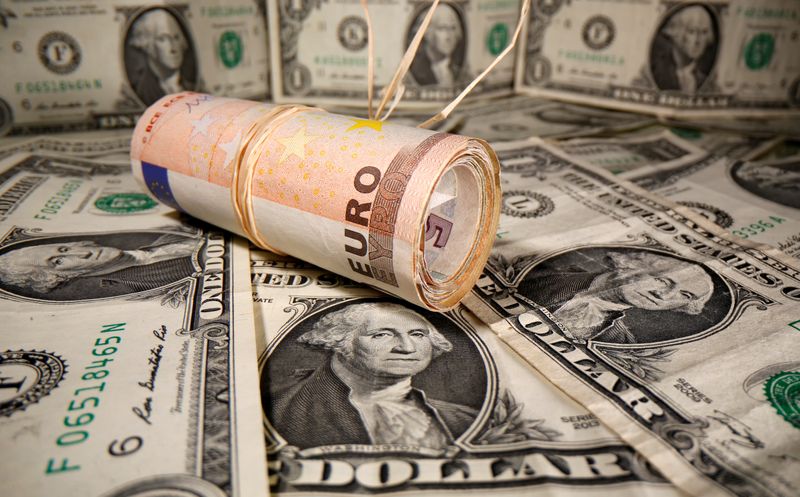By Hideyuki Sano
TOKYO (Reuters) - The euro rose to a four-month high against the dollar on Wednesday on hopes European Union leaders may agree on stimulus and deepening fiscal integration to shield the economy from the pandemic.
The dollar was on the defensive, particularly against other growth-leveraged currencies such as the Australian dollar, following an uptick in U.S. inflation and news of progress in vaccine development for COVID-19.
The euro rose to $1.1400 (EUR=), after reaching its highest level since March 10 at $1.1423 earlier in the trade.
Against the yen, the common currency hit one-month high of 122.47 (EURJPY=) while it had scaled a two-week high of $0.91125 British pound the previous day and last stood at 90.690 pence (EURGBP=D4).
"Germany, France and Italy have all taken severe lockdown steps and as a result the coronavirus now appears to be under control. The economy could be gradually recovering," said Bart Wakabayashi, Tokyo Branch manager of State Street (NYSE:STT) Bank and Trust.
The euro has been helped by hopes the European Union could agree at its summit later this week on a rescue financing package that will limit the economic damage to the bloc from the coronavirus pandemic.
The euro's strength helped to push the dollar index (=USD) to one-month low at 96.056. The index last stood at 96.225.
The dollar extended losses on Tuesday after U.S. consumer prices rebounded 0.6% month-on-month, the most in nearly eight years, in June, easing worries about deflationary pressures from the economic downturn.
Further boosting investors' risk appetite, Moderna Inc's (O:MRNA) experimental vaccine for COVID-19 showed it was safe and provoked immune responses in all 45 healthy volunteers in an ongoing early-stage study, U.S. researchers reported on Tuesday.
Against that backdrop, the risk-sensitive Australian dollar rose 0.24% to $0.6992
Sterling, however, underperformed after data showed Britain's economy was recovering more slowly than forecast.
Gross domestic product rose by 1.8% in May after falling by a record 20.8% in April, well below forecasts in a Reuters poll.
The pound last traded at $1.2567
The yen stood at 107.28 yen per dollar
The market has so far taken the latest heightening in U.S.-China tensions in its stride.
President Donald Trump signed legislation and an executive order to hold China "accountable" for the national security law it imposed on Hong Kong.
Trump also signed a bill approved by the Congress to penalise banks doing business with Chinese officials who implement the new security law.
In response, the Chinese foreign ministry said on Wednesday it will impose retaliatory sanctions on U.S. individuals and entities.
"While there are increasing doubts on whether Hong Kong will remain an open market, investors think this is a very long-term issue," said Ayako Sera, senior market economist at Sumitomo Mitsui (NYSE:SMFG) Trust Bank.
Diplomatic battles between the two big powers have intensified on several other fronts, such as the COVID-19 pandemic, military operations in the South China Sea and trade.
The onshore yuan ticked up 0.05% to 7.0040 per dollar
The Canadian dollar bounced back from a two-week low, changing hands at C$1.3604 per U.S. dollar
The Canadian central bank is expected to leave rates on hold at a policy announcement on Wednesday, with investors likely to focus on the bank's outlook for the economy and potential guidance on its bond-buying program.

Graphic: World FX rates in 2020 https://graphics.reuters.com/GLOBAL-CURRENCIES-PERFORMANCE/0100301V041/index.html